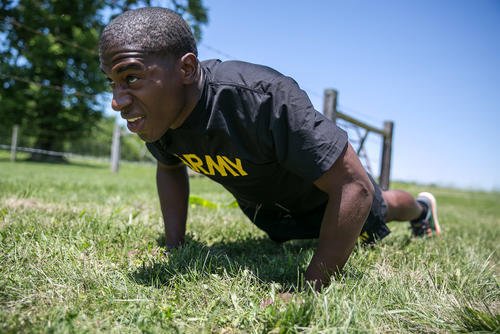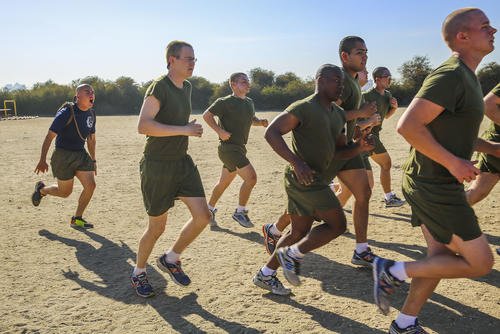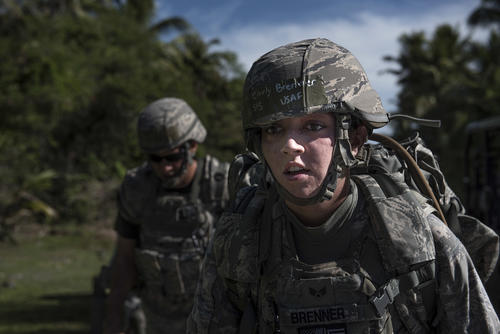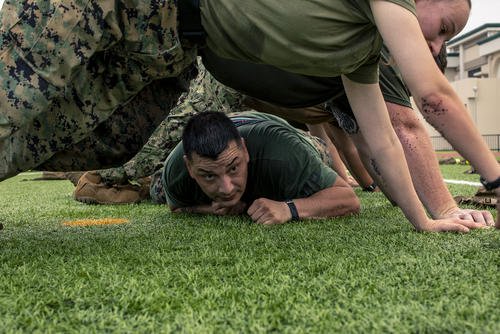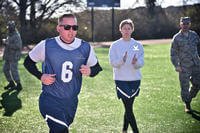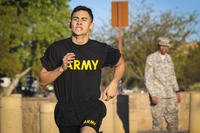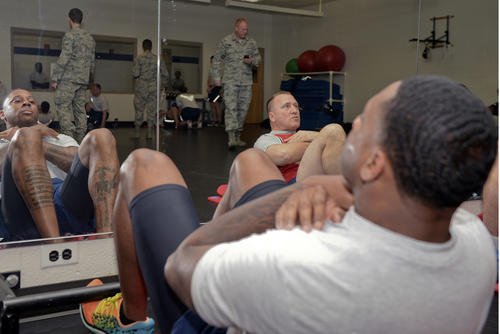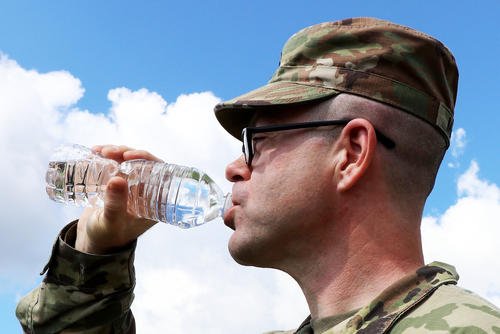Whenever we sustain an injury during training, it is normal to stop working out so we have time to rest and recover.
But is that necessary? Working out with a painful joint, such as the shoulder or elbow, sometimes means modifying the exercises you do, but not avoiding the gym altogether. For instance, some pushing exercises may be uncomfortable because of a particular injury, while a pulling exercise that engages different muscles and tendons may still be suitable for training.
Here is this week’s question:
Stew,
I have a shoulder injury and still need to train. It is not bad, but it only hurts when I do push-ups or overhead presses. I can still do pull-ups. What do you recommend doing with workouts before I ship to Navy boot camp in January?
Thanks,
Greg
Greg, it sounds as though leg day, mobility work, core workouts, cardio and some pulling workouts are still on the table. You can still do 90% of what you usually would. Just make sure to eliminate the pushing that hurts and find ways to isolate the shoulder, allowing you to still work the triceps.
Here is the way I would recommend working around this injury to give it the rest it needs:
Cardio Activity
Swimming
Swimming may be uncomfortable, so limit pool time to practicing certain skills (such as treading) and swimming with fins. You may not want to do freestyle swimming, but you may find the breaststroke and side stroke can work well even with an injured shoulder because of the different pulling and arm recovery motions.
Read Next: How to Decide Whether You Should Eat Before Working Out
Running
You can still run, but if it hurts your shoulder because of the pounding or arm swing, you should bike or choose another nonimpact cardio option. If running bothers your shoulder too much, you should see a doctor because it is likely more serious than an overuse injury or tendinitis.
Rucking
The same advice applies to rucking as it does to running; however, the straps on a backpack may further aggravate the shoulder. If it does, discontinue rucking or replace the backpack with a weight vest to reduce pressure on your shoulders.
Nonimpact Options
If you want to move your shoulder gently, consider rowing or using an elliptical machine. This is a low-impact test more than a hard workout, but you may find some motion is OK and could be a good way to warm up the arm, chest and shoulder muscles.
Resistance Training
Leg day
There’s no need to skip leg day. Back or front squats may challenge the shoulder, depending on what muscles and tendons are tight. Focus more on kettlebell squats, leg machines and calisthenic exercises such as air squats and lunges to avoid placing the shoulder in any painful positions.
Core Exercises
Many exercises in the “core system” can still be added to your training, but you may want to avoid certain positions, such as the plank pose, reverse push-ups or placing your hands behind you during flutter kicks, to minimize strain on the shoulders.
Upper-Body Pull Exercises
Continue with pull-ups, pulldowns, rows and biceps curls, but consider limiting your normal pull-up or pulldown volume or weight to reduce the strain on your shoulders. It may only hurt with pushing motions now, but continued high volume could lead to similar pains while pulling as well. There is no need to eliminate these, but limit them for a few weeks until it no longer hurts to push.
Upper-Body Push Exercises
If dips, overhead presses, bench presses, and push-ups hurt, do not do them. However, you may still be able to do triceps pushdowns with a cable machine or triceps kickbacks to work the back of the arms without using the shoulders.
Mobility and Flexibility Training
Do not skip mobility day. Many people will ditch workouts when a joint bothers them. Do a few mobility days each week, especially if you find yourself needing to skip your normal routine. This is a great placeholder workout and will make you feel like you did something.
Even with a shoulder injury, you can still do a significant amount of training and spread them throughout the week while you heal. The important thing is to keep moving, as it is easy to stop altogether when injured.
Prioritize Your Health
It’s easy to overdo it when training for a military milestone whether that’s shipping to boot camp or preparing for special forces training. Remember, you only get one body, train smart and don’t break yourself before the real challenge begins. And if your shoulder or any other injury continues to bother you, make sure you see a doctor so you can get back into fighting shape in a healthy way.
See more ideas on training and working around injuries at the Military.com Fitness Section.
Want to Learn More About Military Life?
Whether you're thinking of joining the military, looking for fitness and basic training tips, or keeping up with military life and benefits, Military.com has you covered. Subscribe to Military.com to have military news, updates and resources delivered directly to your inbox.







